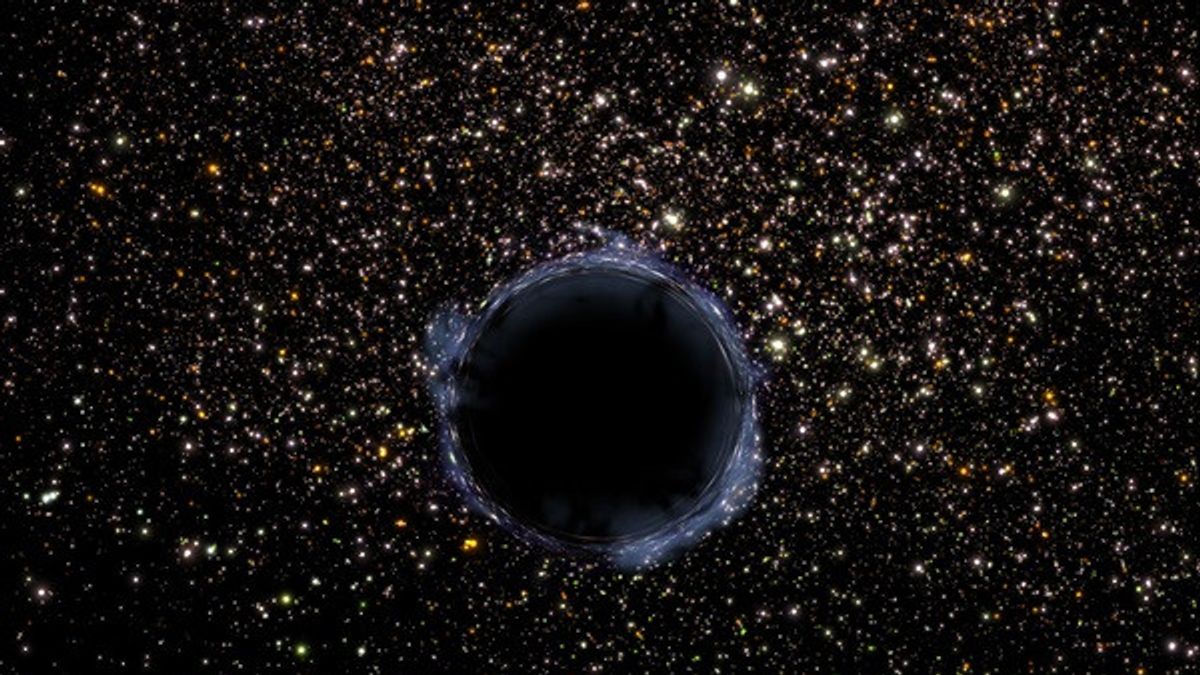JAKARTA - For a long time, one of Stephen Hawking's most controversial theories has been a big challenge for astronomers and scientists to find the answer. Now they have solved it.
In the 1970s, Hawking suggested that dark matter, the invisible substance that makes up most of the matter in the universe, might be made up of black holes that formed during the early days of the Big Bang.
Now, three astronomers have developed a theory that explains not only the existence of dark matter, but also the appearance of the largest black hole in the universe.
"What I personally find really interesting about this idea is how it elegantly brings together two very challenging problems I'm working on, namely investigating the nature of dark matter and the formation and growth of black holes and solving them in one fell swoop," said study co-author Priyamvada. Natarajan, an astrophysicist at Yale University.
What's more, several new instruments including the recently launched James Webb Space Telescope could produce the data needed to finally assess Hawking's famous ideas.
There was a black hole from the start
Citing Space, Tuesday, January 4, dark matter makes up more than 80 percent of all matter in the universe, but it doesn't interact directly with light in any way. It just floats to be big, affecting the gravity within the galaxy.
It is likely that black holes are responsible for everything that happens in the universe. Unfortunately, in the modern universe, black holes form only after massive stars die, then collapse under the weight of their own gravity. So making a black hole would have to take a lot of stars, to make normal matter.
Scientists know how much normal matter was in the universe from calculations of the early universe, where hydrogen and helium first formed. There is not enough normal matter to make up all the dark matter astronomers have observed.
That's where Hawking comes in. In 1971, he revealed that the so-called primordial black hole was formed after the Big Bang. There, pockets of matter can spontaneously reach the density needed to create a black hole, flooding the cosmos with them long before the first stars twinkled. Hawking suggested that these primordial black holes may be responsible for all dark matter.
Research Results Based on Hawking's Theory
In the new study, astronomers Natarajan and Nico Cappelluti at the University of Miami and Günther Hasinger at the European Space Agency (ESA) delve into the theory of primordial black holes, exploring how they explain dark matter and possibly solving other cosmological challenges.
To pass the test, a primordial black hole must be within a certain mass range. In the new work, astronomers assume that the primordial black hole had a mass about 1.4 times the mass of the Sun.
They built a model of the universe that replaced all dark matter with this fairly bright black hole, and then they looked for observational clues that could validate the model.
Astronomers discovered that primordial black holes could play a major role in the universe by seeding the first stars, the first galaxies, and the first supermassive black holes (SMBHs).
Observations show that stars, galaxies, and SMBHs emerged very quickly in cosmological history, perhaps too quickly to be explained by the processes of formation and growth we observe in the universe today.
"Primordial black holes, if they exist, could be the seeds from which all supermassive black holes form, including those at the center of the Milky Way," Natarajan said.
The theory is simple and does not require a new collection of particles to explain dark matter.
"Our study shows that without introducing new particles or new physics, we can solve the mysteries of modern cosmology from the nature of dark matter itself to the origins of supermassive black holes," Cappelluti said.
So far the idea is just a model, but it can be tested. Meanwhile, the James Webb Space Telescope, launched on Christmas Day after years of delays, will answer questions about the origin of stars and galaxies.
The next generation of gravitational wave detectors, most notably the Laser Interferometer Space Antenna (LISA), is poised to reveal more about black holes, including primordial black holes if they ever existed.
The English, Chinese, Japanese, Arabic, and French versions are automatically generated by the AI. So there may still be inaccuracies in translating, please always see Indonesian as our main language. (system supported by DigitalSiber.id)













